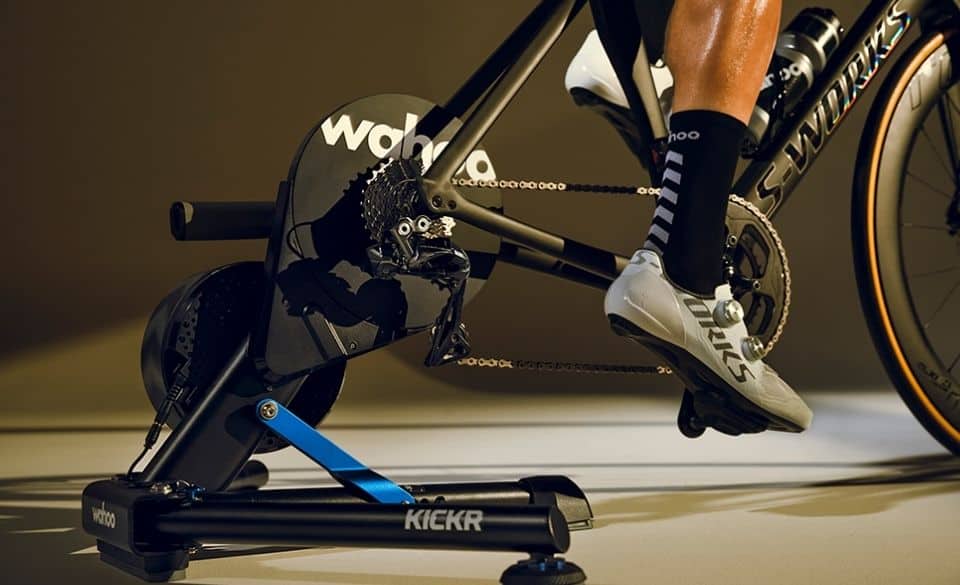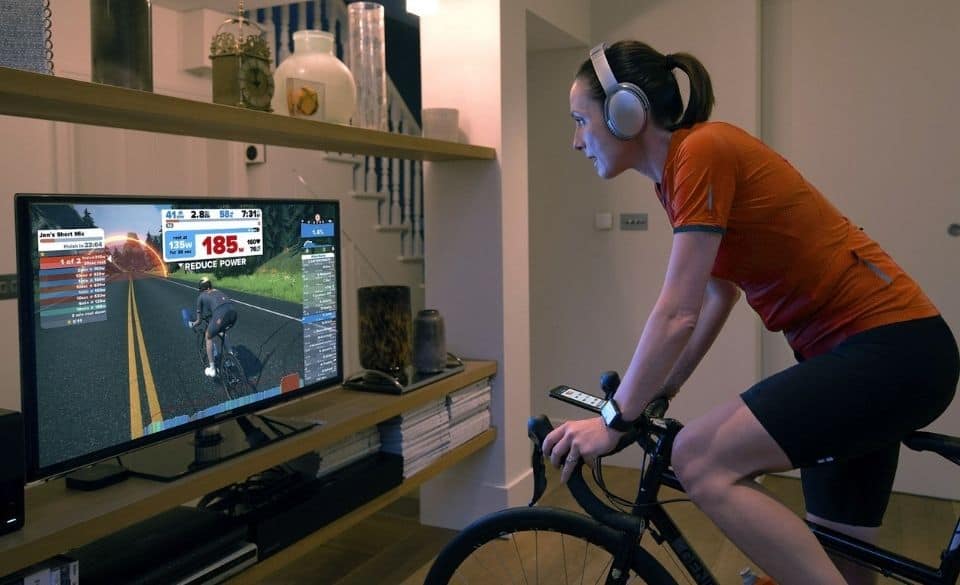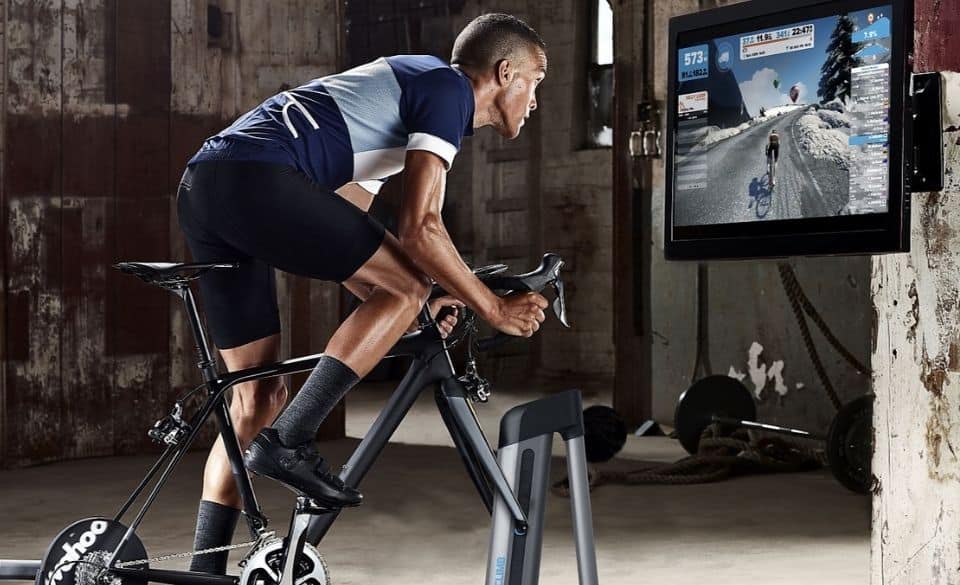
Indoor Cycling For Weight Loss – How Many calories Does Indoor Cycling Burn?
Page Contents
Indoor Cycling For Weight Loss
Whether your training for a cycling, triathlon, or increased health benefits, working out at a high intensity indoors has shown to develop strength, increase weight loss, and lower body fat percentage. A study in 2010 found that indoor cycling for weight loss also helped lower cholesterol and triglyceride levels. That alone should be enough evidence that indoor cycling is good for weight loss, but more importantly, keeping you healthy.
Indoor cycling provides a low-impact workout that helps strengthen muscles, bones, and joints by keeping the impact and pressure low on them. This makes indoor cycling a good workout option for people looking to lose weight without causing any joint issues or injuries. Other sports like running often put a lot of stress on the knees, hips, and ankles, so indoor cycling for weight loss is a safer alternative to other high-impact sports.
If you are looking to lose weight through indoor cycling, it is just one of the many factors that influence losing weight. Your diet plays a vital role, and if paired correctly with an indoor cycling training plan, you will start to see the benefits quickly.
Unfortunately, cycling indoors 1-2 times per week isn’t going to be enough to see a rapid weight change. So, focus on regular indoor riding at least 3-4 times per week and mix up the sessions between high-intensity workouts and longer indoor workouts.
Here you can find some great 30 and 60-minute indoor training sessions to help get you started. If you still don’t know where to start, take advice from a good cycling coach that can help customize a program for you.

Indoor Cycling Benefits and Disadvantages
If you are considering training indoors, you are either trying to get fit or lose weight. Many cyclist’s and triathletes use indoor training as a tool when time is limited, or when the weather changes. Other’s use indoor cycling as a way to lose weight or stay healthy. Either way, indoor cycling has benefits and disadvantages.
The Disadvantages of Indoor Cycling
Usually, most people look at the advantages starting, but if you focus on the disadvantages first, you can decide whether indoor cycling is for you. So let’s first look at what might put people off riding indoors:
Cost – Whether you buy an indoor exercise bike or an indoor trainer, it’s going to come at a cost. If you already have a road bike, buying an indoor trainer will be the cheapest option. Otherwise, if you need to fork out for an exercise bike, it’s going to be an expensive investment, especially if you want a good one.
Space – If you live in an apartment or small house, you may be limited in space. No one wants to listen to the sound of an indoor trainer next to them for the next hour. There are some quiet indoor trainers available on the market, but usually, they are the top models which are fairly expensive. If you are limited in space, you may need to store away the exercise bike or trainer when you’re not using it. This can often prevent the person from having the motivation to train indoors every day.
Heat – Training inside can get extremely warm, and often you find yourself sweating a lot during those hard efforts. Although it is possible to open a window, you will ultimately need to purchase a fan that will increase the airflow, adding to the cost of getting started.
Loud – Indoor trainers and exercise bikes have gotten better at lowering the sound they produce, but unfortunately, some can be noisy, especially if you buy a budget model. While it might be ok for you, your family isn’t going to be happy that they can’t watch tv in peace.
Boredom – Sitting inside training, whether it’s for 30 minutes or 60 minutes, can be boring, especially if you aren’t used to it. Cycling inside just doesn’t give you the variation that you see outside.
Distraction – If you don’t feel motivated or get distracted by something else, it’s easy to cut a session short. Either way, training at home offers man distractions that can prevent you from doing the training you have planned to do.
The advantages of Indoor Cycling
While you may be wondering why you would want to cycle indoors after all the disadvantages, luckily the advantages of riding indoors are much larger.
Health – There are multiple health benefits to riding indoors. Not only does it help to burn fat, but strengthens your heart and lungs while building strength.
Privacy – Training inside at home gives you the privacy to wear what you want and not get interrupted by other people’s training. Some people like to train in private, and cycling indoors is a great way to do that.
Safety – Cycling outdoors is getting more unsafe every year. From cars to potholes, there are many safety hazards to riding outside. Training indoors provides a safe environment where you don’t need to worry about traffic.
Convenience – Having the option to jump on the bike at any given moment is a benefit you get cycling indoors. It allows you to get in those early morning rides without having to prepare to go to the gym or for a ride outside. It also allows you to cut the training short at any time if needed.
Money – While the initial outlay may hurt a little. Once you have invested in an exercise bike or indoor trainer, you have zero cost. There is no need for monthly gym fees or having to purchase equipment for outdoor riding.
Zwift – If you have a competitive nature in you, Zwift can offer an easy way to join other people and get the heart rate up. Zwift has races happening nearly every day and is a great way to get a high-intensity training session in.

How Many calories Does Indoor Cycling Burn?
The number of calories you burn cycling indoors can vary greatly. The intensity you ride at, the length of the workout, and the temperature can play a large part in the number of calories you burn.
Typically you can expect to burn roughly 350-600 calories an hour. the higher the intensity of the session, the higher the rate of calories burned.



